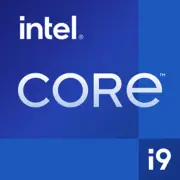Intel Core i9-10900KF

Intel Core i9-10900KF im Jahr 2025: Lohnt sich der Kauf der Legende aus der Vergangenheit?
Überblick, Tipps zur Zusammenstellung und Vergleich mit Mitbewerbern
Hauptmerkmale: Architektur und Leistung
Der im Jahr 2020 veröffentlichte Prozessor Intel Core i9-10900KF bleibt auch im Jahr 2025 eine beliebte Wahl für Enthusiasten. Seine Comet Lake-S Architektur basiert auf einem 14-nm-Fertigungsprozess – einer Technologie, die Intel über mehrere Generationen hinweg genutzt hat. Trotz seines „Alters“ bietet der Chip eine beeindruckende Leistung:
- 10 Kerne / 20 Threads mit einer Basisfrequenz von 3,7 GHz und einem Turbo-Boost von bis zu 5,3 GHz.
- 20 MB L3-Cache – ausreichend für die Bearbeitung anspruchsvoller Aufgaben.
- TDP von 125 W – ein hoher Energieverbrauch, der jedoch für einen High-End-CPU gerechtfertigt ist.
Wichtige Eigenschaften:
- Unterstützung der Thermal Velocity Boost-Technologie für automatisches Übertakten.
- Möglichkeit zum manuellen Übertakten (Bezeichnung „K“).
- Keine integrierte Grafik (Bezeichnung „F“), was den Preis senkt.
Leistung im Jahr 2025:
- In Geekbench 6: 1767 (Single-Core) und 9261 (Multi-Core). Zum Vergleich erreicht der Ryzen 5 7600X (2023) etwa ~2200/11000, ist jedoch teurer.
- In Spielen (z.B. Cyberpunk 2077) liefert der i9-10900KF stabile 90+ FPS in Kombination mit einer RTX 4070 bei Ultra-Einstellungen.
Kompatible Motherboards: Auswahl im Jahr 2025
Der Prozessor verwendet den Sockel LGA 1200, der mit den Chipsätzen der Serien 400 und 500 kompatibel ist:
- Z490/Z590 – die beste Wahl für Übertaktung (unterstützt PCIe 4.0 auf Z590).
- B460/B560 – Budget-Boards mit begrenzten Übertaktungsmöglichkeiten.
Beispiele aktueller Modelle:
- ASUS ROG Strix Z590-E (250 $): 14-phasige VRM, Wi-Fi 6, zwei PCIe 4.0-Steckplätze.
- MSI B560M Pro-VDH (130 $): Basismodell für Builds ohne Übertaktung.
Auswahlkriterien:
- Stellen Sie sicher, dass das BIOS auf eine Version aktualisiert wurde, die Comet Lake unterstützt.
- Für PCIe 4.0 ist ein Board mit dem Chipsatz Z590 erforderlich.
Unterstützter Speicher: Nur DDR4
Der i9-10900KF arbeitet mit DDR4:
- Offizielle Unterstützung: bis zu DDR4-2933 MHz.
- Empfohlen: DDR4-3200/3600 MHz mit niedrigen Timings (CL16).
Beispielkonfiguration:
- 32 GB (2×16 GB) Kingston Fury Renegade DDR4-3600 CL16 (110 $).
Wichtig: DDR5 wird nicht unterstützt – dies ist die Hauptbeschränkung für Builds im Jahr 2025.
Netzteil: Leistungsberechnung
Unter Berücksichtigung einer TDP von 125 W und dem Energiebedarf aktueller Grafikkarten:
- Minimale Leistung des Netzteils: 650 W.
- Empfohlen: 750–850 W (für RTX 4080 oder RX 7900 XT).
Tipps:
- Wählen Sie Netzteile mit 80 Plus Gold-Zertifizierung (z.B. Corsair RM750x, 130 $).
- Berücksichtigen Sie den Spitzenenergieverbrauch beim Übertakten – die CPU kann bis zu 250 W ziehen.
Vor- und Nachteile des Prozessors
Vorteile:
- Hohe Gaming-Leistung dank einer Frequenz von bis zu 5,3 GHz.
- Attraktiver Preis (300–350 $ im Jahr 2025) im Vergleich zu neuen Ryzen 7/9.
- Gute Upgrade-Möglichkeiten (z.B. von RTX 3070 auf RTX 5070).
Nachteile:
- Veralteter 14-nm-Fertigungsprozess – hohe Temperaturen und Energieverbrauch.
- Keine Unterstützung für PCIe 5.0 und DDR5.
- Schlechtere Leistung als der Ryzen 9 5900X bei Multi-Thread-Anwendungen (Rendering, Codierung).
Nutzungszenarien
1. Gaming: Ideal für 1440p/4K-Gaming. In Kombination mit der RTX 4070 Ti erzielt er über 120 FPS in Apex Legends.
2. Arbeitsaufgaben: Geeignet für Videobearbeitung in Premiere Pro, aber unterlegen gegenüber Ryzen 9 in Blender.
3. Streaming: Externe GPU mit NVENC erforderlich – die CPU-Belastung bleibt minimal.
Vergleich mit Mitbewerbern
- AMD Ryzen 9 3900X (12 Kerne): Besser bei Multi-Thread-Anwendungen (280 $), aber schwächer beim Spielen.
- Intel Core i5-13600K (14 Kerne): Neuer, 15–20% schneller, aber teurer (400 $).
- Ryzen 7 7700X: Unterstützung für DDR5 und PCIe 5.0, aber Preis von 450 $.
Fazit: Der i9-10900KF ist eine gute Wahl bei einem Budget von bis zu 500 $ für den gesamten Build.
Praktische Tipps zur Zusammenstellung
1. Kühlung: Verwenden Sie eine All-in-One-Wasserkühlung (z.B. NZXT Kraken X63, 150 $) oder einen leistungsstarken Tower-Kühler (Noctua NH-D15, 100 $).
2. Gehäuse: Wählen Sie Modelle mit guter Belüftung (Lian Li Lancool III, 140 $).
3. Übertaktung: Mit Z590 lassen sich stabile 5,1 GHz auf allen Kernen erreichen (Spannung ~1,35 V).
Fazit: Für wen ist der i9-10900KF geeignet?
Dieser Prozessor ist eine Überlegung wert für:
- Gamer, die sparen möchten, ohne FPS zu verlieren.
- Enthusiasten, die einen PC auf dem Gebrauchtmarkt zusammenstellen (Motherboards LGA 1200 sind derzeit günstig).
- Nutzer, die ein älteres System (z.B. mit i5-9400F oder Ryzen 5 2600) upgraden möchten.
Zielgruppe: Diejenigen, die 2025 ein Gleichgewicht zwischen Preis und Leistung suchen. Wenn Sie keine PCIe 5.0 oder DDR5 benötigen, bleibt der i9-10900KF eine lohnende Wahl.
Preise gelten für April 2025. Bei richtiger Einstellung wird dieser Prozessor noch einige Jahre mit modernen Aufgaben zurechtkommen – wichtig ist, an eine gute Kühlung zu denken!
Basic
CPU-Spezifikationen
Speicherspezifikationen
Verschiedenes
Benchmarks
Im Vergleich zu anderen CPUs
In sozialen Medien teilen
Oder verlinken Sie uns
<a href="https://cputronic.com/de/cpu/intel-core-i9-10900kf" target="_blank">Intel Core i9-10900KF</a>